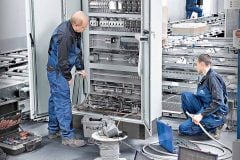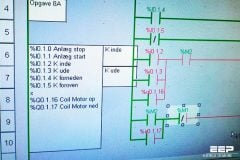1st part | 2nd part | 3rd part
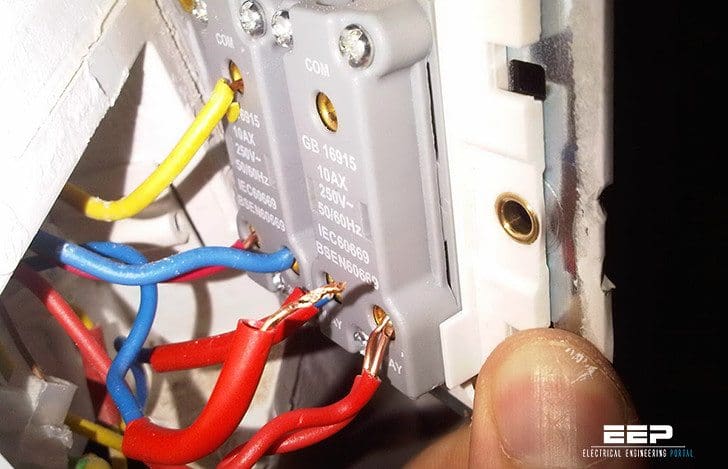
Household Circuit Wirings
The list of the last eleven household circuit wirings:
- Three-way switches & light fixture (fixture at start of cable run)
- Three-way switches & light fixture (fixture at end of cable run)
- Three-way switches & light fixture with duplex receptacle
- Three-way switches & multiple light fixtures (fixtures between switches)
- Three-way switches & multiple light fixtures (fixtures at beginning of run)
- Four-way switch & light fixture (fixture at start of cable run)
- Four-way switch & light fixture (fixture at end of cable run)
- Multiple four-way switches controlling a light fixture
- Four-way switches & multiple light fixtures
- Ceiling fan/light fixture controlled by ganged switches (fan at end of cable run)
- Ceiling fan/light fixture controlled by ganged switches (switches at end of cable run)
21. Three-way switches & light fixture (fixture at start of cable run)


Use this layout variation of circuit wiring 19 where it is more convenient to locate the fixture ahead of the three-way switches in the cable run. Requires two-wire and three-wire cables.
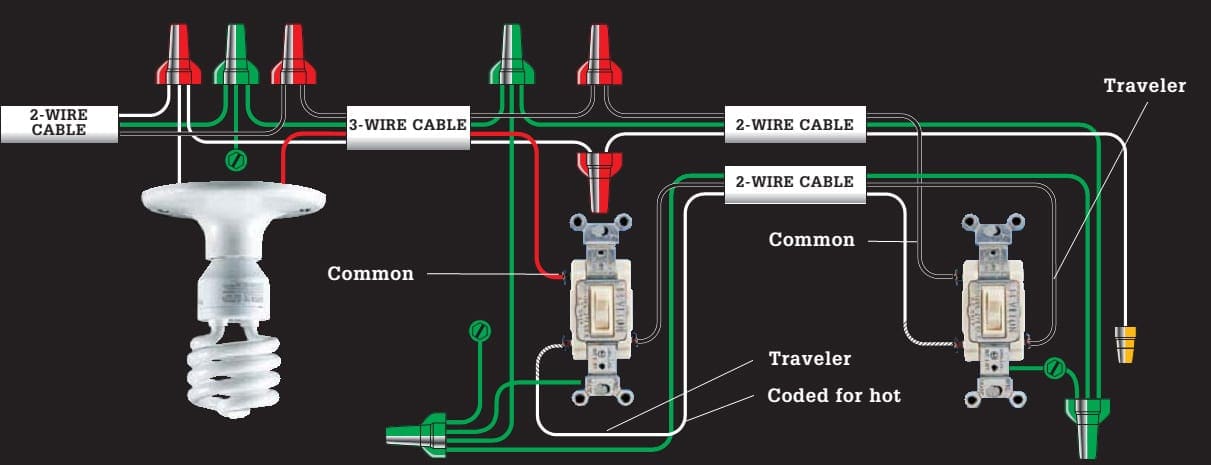

22. Three-way switches & light fixture (fixture at end of cable run)


This variation of the three-way switch layout (circuit wiring 20) is used where it is more practical to locate the fixture at the end of the cable run. Requires two-wire and three-wire cables.
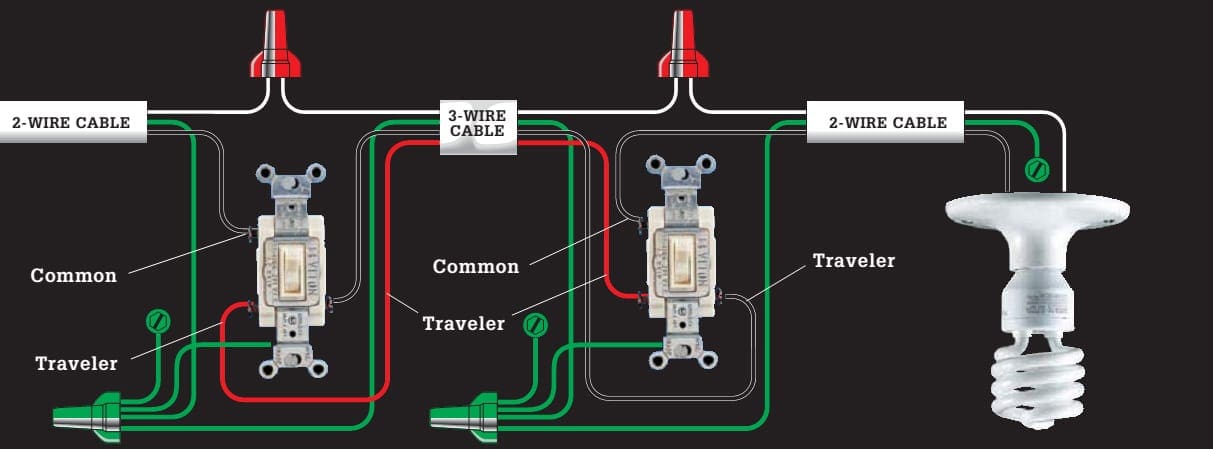

23. Three-way switches & light fixture with duplex receptacle
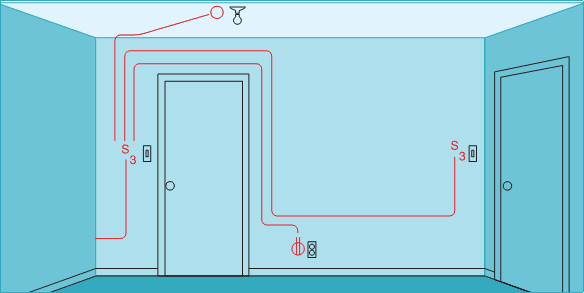

Use this layout to add a receptacle to a three-way switch configuration (circuit wiring 21). Requires two-wire and parallel runs of two-wire cables.
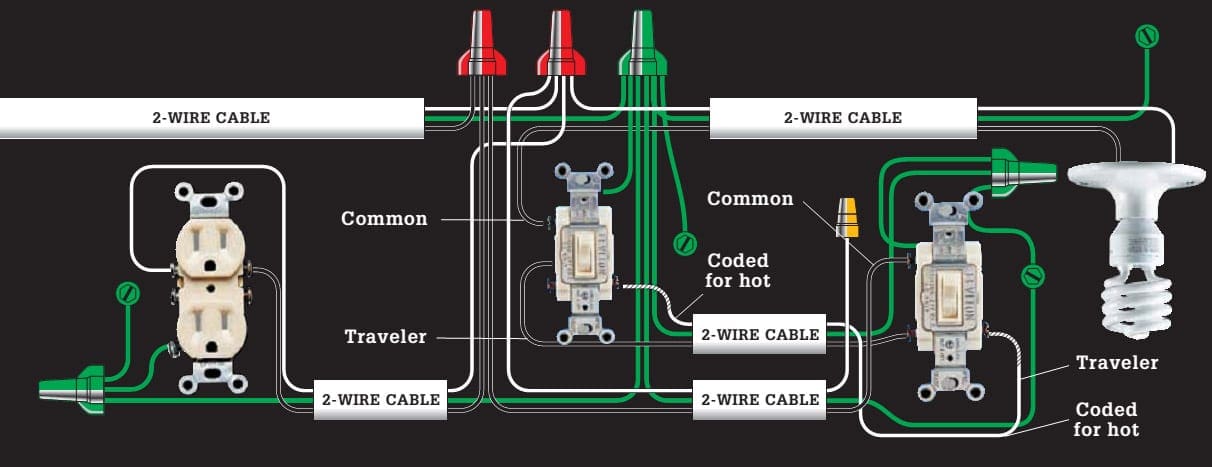

24. Three-way switches & multiple light fixtures (fixtures between switches)
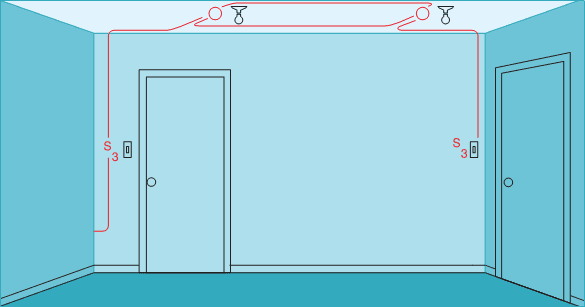

This is a variation of circuit wiring 20. Use it to place multiple light fixtures between two three-way switches where power comes in at one of the switches. Requires two- and three-wire cable.


25. Three-way switches & multiple light fixtures (fixtures at beginning of run)
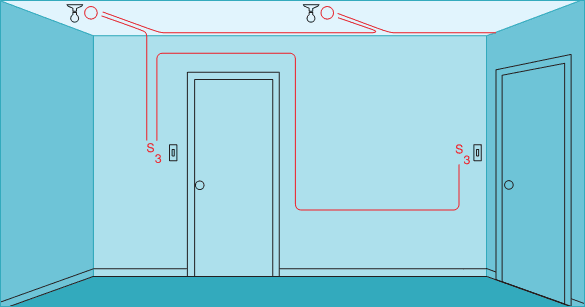

This is a variation of circuit wiring 21. Use it to place multiple light fixtures at the beginning of a run controlled by two three-way switches. Power comes in at the first fixture. Requires two- and three-wire cable.
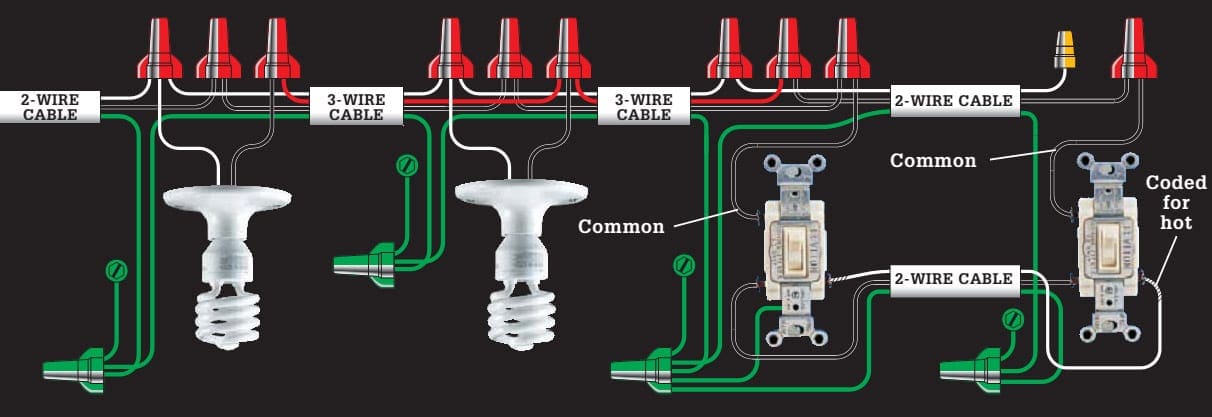

26. Four-way switch & light fixture (fixture at start of cable run)
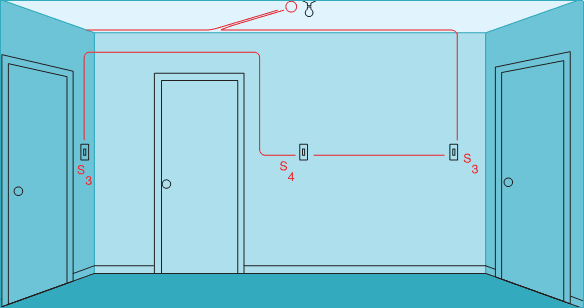

This layout lets you control a light fixture from three locations. The end switches are three-way, and the middle is four-way. A pair of three-wire cables enter the box of the four-way switch.
Requires two three-way switches and one four-way switch and two-wire and three-wire cables.
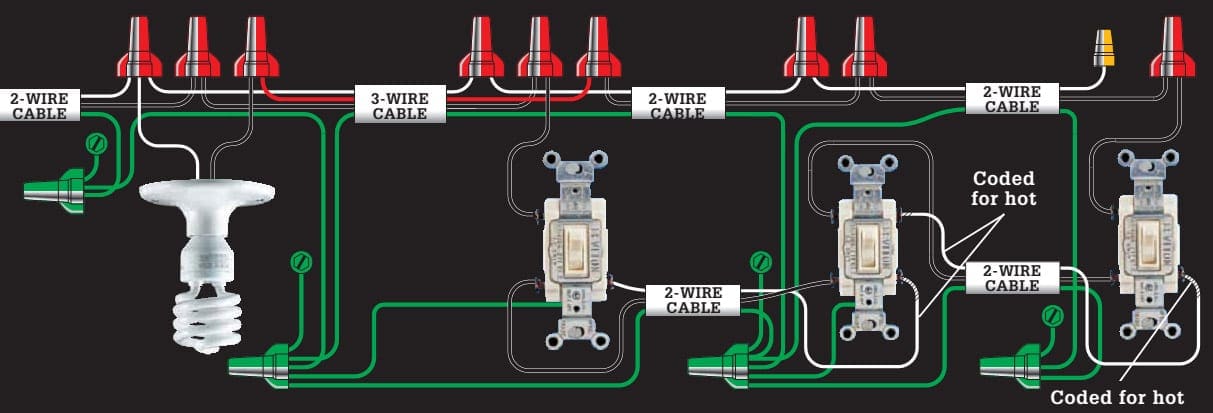

27. Four-way switch & light fixture (fixture at end of cable run)


Use this layout variation of circuit wiring 26 where it is more practical to locate the fixture at the end of the cable run. Requires two three-way switches and one four-way switch and two-wire and three-wire cables.
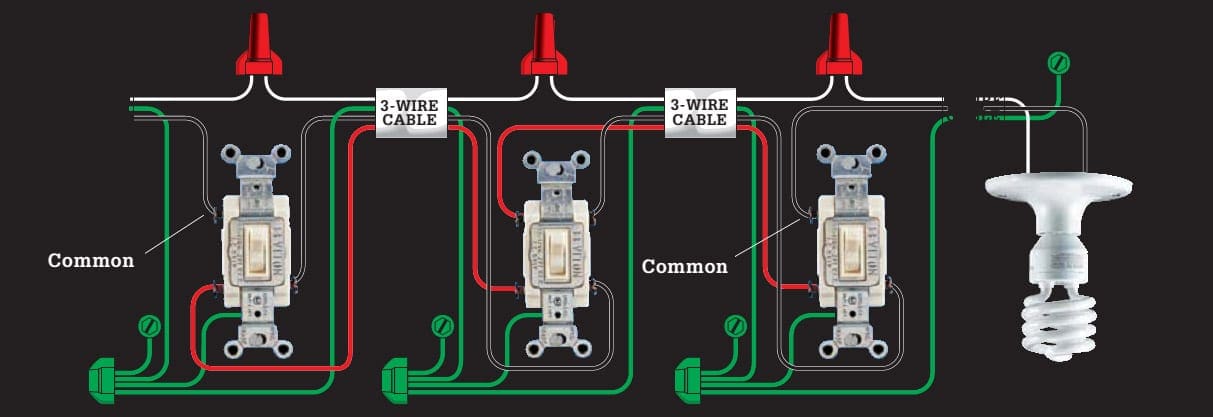

28. Multiple four-way switches controlling a light fixture
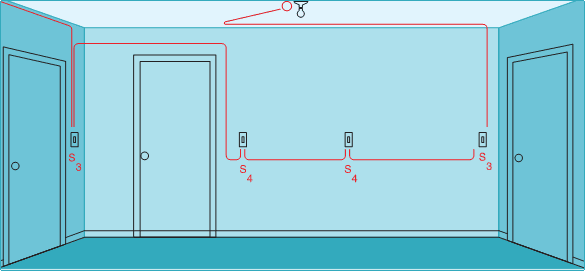

This alternate variation of the four-way switch layout (circuit wiring 27) is used where three or more switches will control a single fixture. The outer switches are three-way, and the middle are four-way.
Requires two three-way switches and two four-way switches and two-wire and three-wire cables.
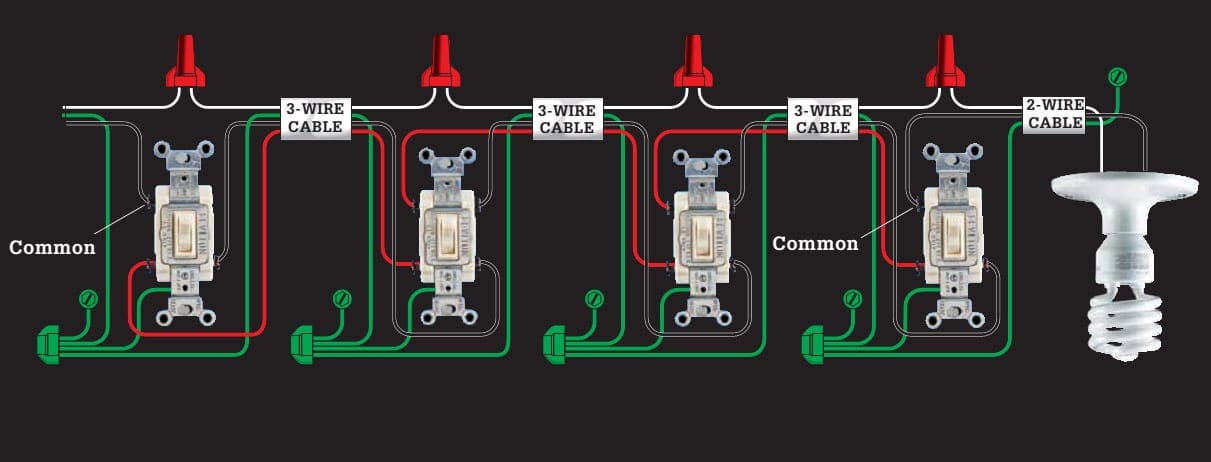

29. Four-way switches & multiple light fixtures


This variation of the four-way switch layout (circuit wiring 26) is used where two or more fixtures will be controlled from multiple locations in a room. Outer switches are three-way, and the middle switch is a four-way.
Requires two three-way switches and one four-way switch and two-wire and three-wire cables.
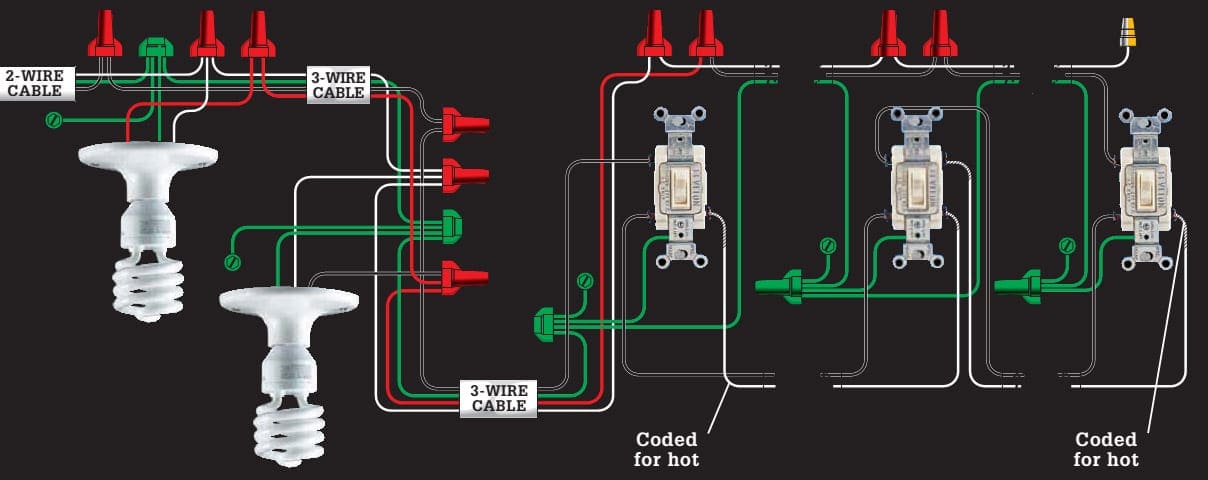

30. Ceiling fan/light fixture controlled by ganged switches (fan at end of cable run)
This layout is for a combination ceiling fan/ light fixture controlled by a speed-control switch and dimmer in a double-gang switch box. Requires two-wire and three-wire cables.
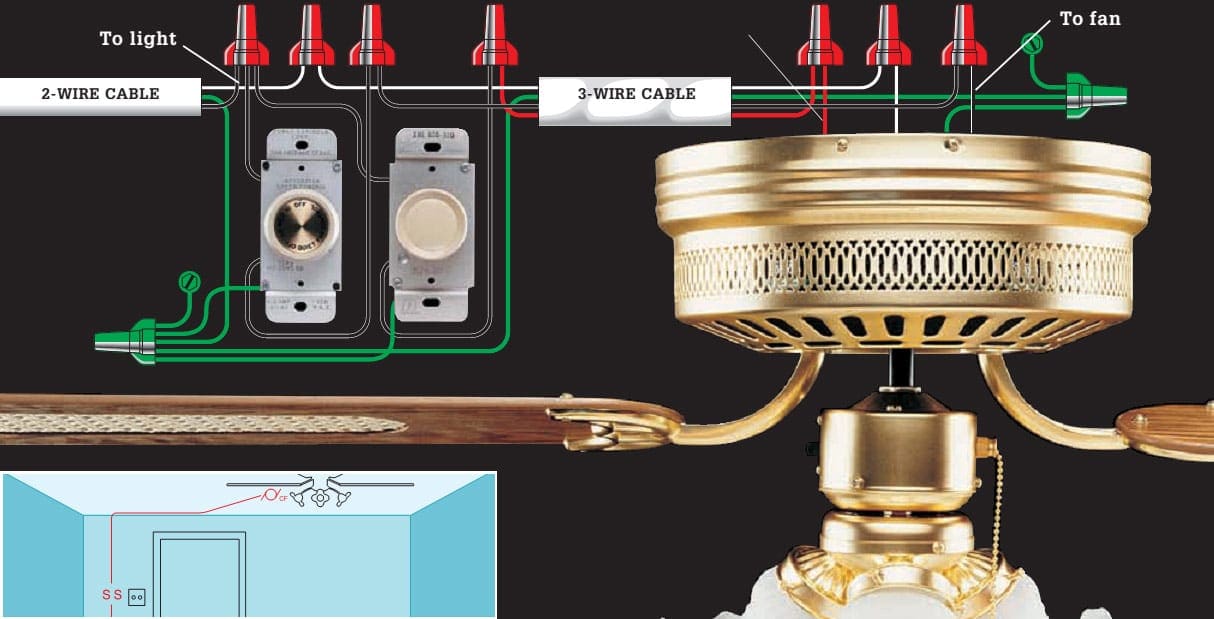

31. Ceiling fan/light fixture controlled by ganged switches (switches at end of cable run)
Use this switch loop layout variation when it is more practical to install the ganged speed control and dimmer switches for the ceiling fan at the end of the cable run.
Requires two-wire and parallel runs of two-wire cables.


1st part | 2nd part | 3rd part
Reference // The Complete Guide to Electrical Wiring (Current with 2014–2017 Electrical Codes) – Black+Decker



